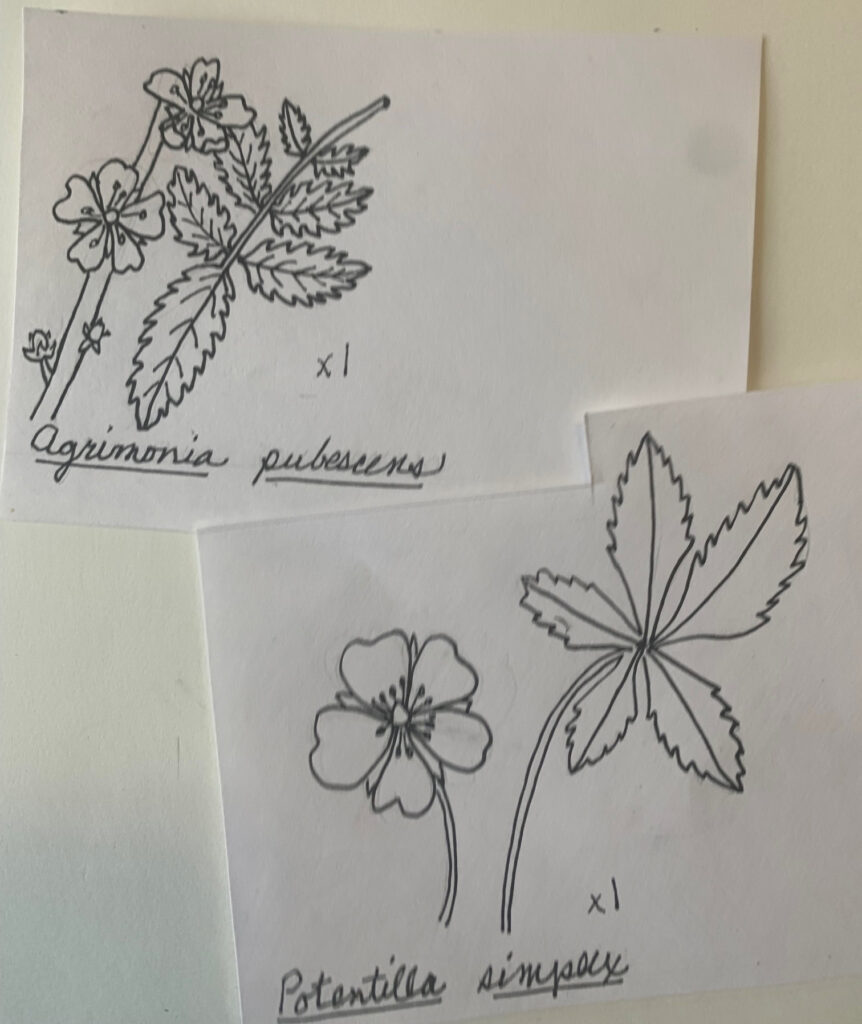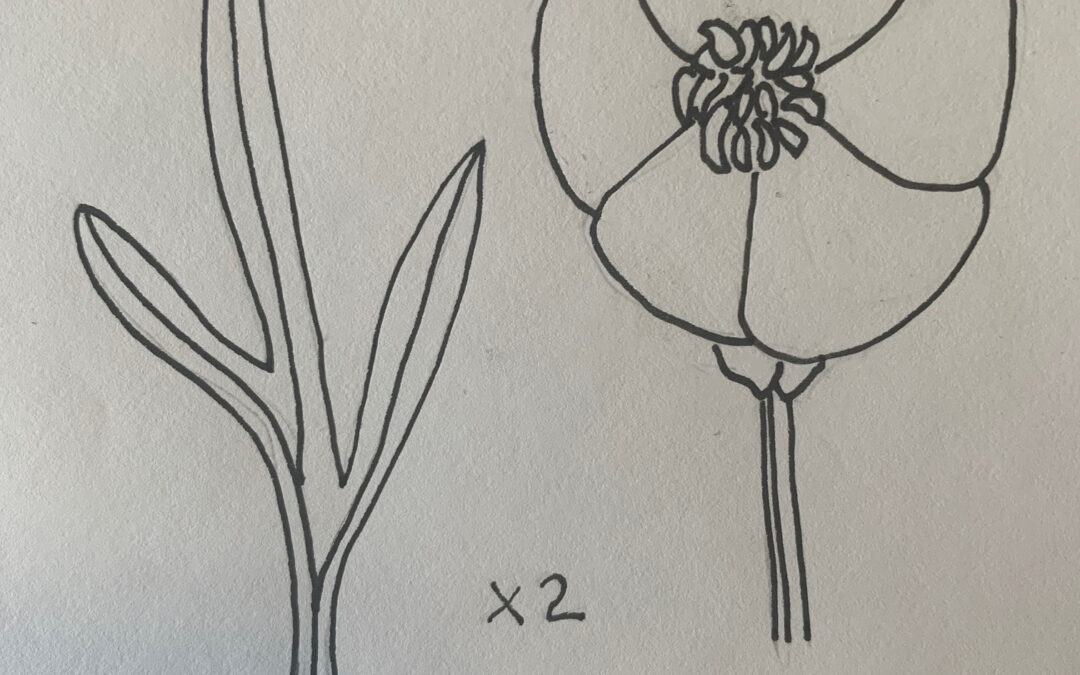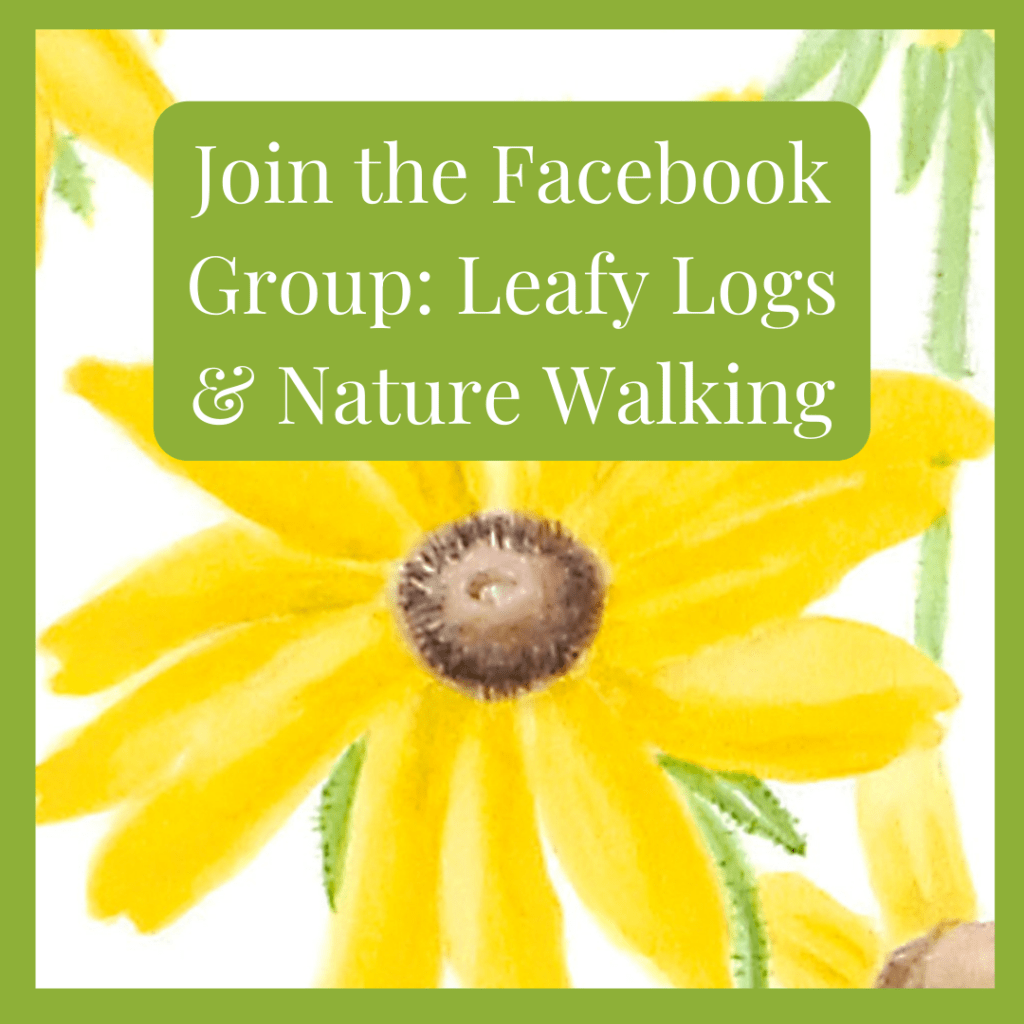I was walking around my favorite abandoned parking lot the other day looking for flowers that might have survived the assault of lawn mowers and mulching activity, when I spotted a beautiful yellow flower with five petals. It was similar to the buttercups I see in Wisconsin, but this one was a little more orange and had a shorter stem. I picked some to bring back with me, and identified it as Ranunculus bubosus, a buttercup native to Europe.
A few hours later I was pulling weeds in my garden and found another yellow flower of about the same size. It also had five yellow petals. I brought this inside and identified it as Agrimonia pubescens. My wildflower field guide (Cotterman, Witt and Weakley, Wildflowers of the Atlantic Southeast, Timber Press Field Guide, 2019) identified this yellow flower as one that grows along a thick stem. Each flower does not have a pronounced stem as is the case with buttercups.
The leaves, however, are elliptical and do not look at all like the divided lanceolate leaves of the buttercup (see the diagrams). These 2 yellow flowers look quite similar. It is easy to confuse them.
While buttercups grow into little seed cases that fall off and seem to disappear, agrimony creates a hairy seed pod that sticks to clothes and to my dog and is a super nuisance. It is definitely not something I want to have around my house. While you can differentiate the flowers, it is easier to tell them apart by their leaves.
Another yellow flower with five petals is potentilla. Like agrimony, it usually blooms later in July. It has palmate leaves with little leaflets that circle around the center stem.
Botanists use different terms to identify leaves. For instance, a leaf may be simple, or it may have many little leaflets along the stem. If that is the case, it is called pinnate. Some leaves are palmately arranged. The leaflets circle the stem, forming a round shape. The potentilla has palmate leaves.
The buttercup has a long narrow leaf called a linear leaf. Some of the leaves are divided into three parts, all very narrow. The agrimony has elliptical leaves with a very toothed edge. They are also very hairy.

Leaves of the buttercup are slightly toxic. Usually cattle will not eat them, because they taste sour. Once they have dried, the toxic chemical loses its potency so they become harmless. The leaves of agrimony and potentilla are not toxic. It is only the seed pods of the agrimony that are a problem.
Leaves are primary food for caterpillars, baby beetle larvae and insects such as aphids. While pollen provides food for some insects, leaves provide food for chewing insects and for growing baby caterpillars.
Insects are fussy eaters. Each kind of insect must have access to its own preferred food in order to survive. This is one of the reasons that we humans have caused so much trouble for insects. We have mowed, plowed and “herbicided” away many of the native plants that specific butterflies and beetles need to survive. We see “green things” but butterfly moms see specific plants.
Monarch moms look for milkweed leaves so that their caterpillars will be able to eat successfully. Fritillary moms look for violets to feed their children. Luna moth moms look for black walnut leaves to feed their babies.
Grizzled skipper butterfly moms look for both agrimonies and potentillas. Both of these plants are in the rose family. Buttercups are sour, so perhaps baby butterflies will not feed on them. We don’t know of any butterflies that eat buttercups.
To distinguish the weeds and plants that you see as you walk along, look for the leaves, too. Even if a plant has no flower, you can identify the plant by looking at the leaves. Most field guides use flowers for identification, but that only helps if the flower is blooming at the time you find it. Perhaps it will also have a fruit case or another identifying part to help you.
Most of all enjoy your walk. Take your friends, children and favorite pet with you. It is always fun to talk about what you find as you walk.


